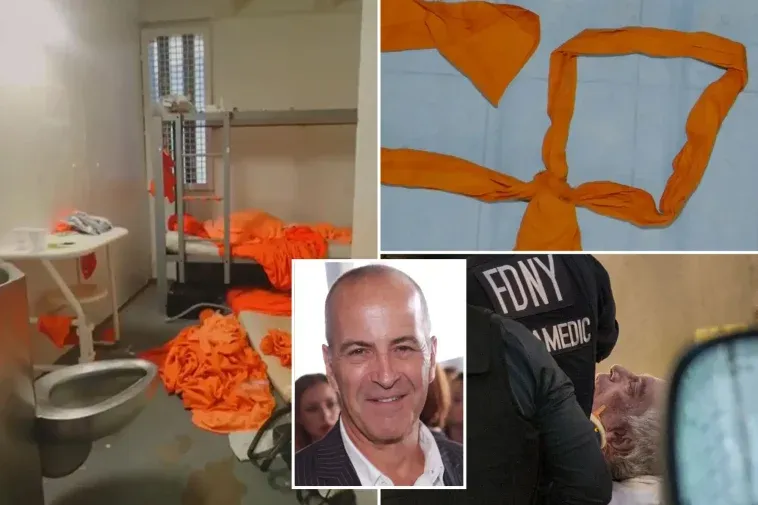(New York Post) Despite being the most high-profile prisoner in the US, Jeffrey Epstein was found dead in federal custody at the Manhattan Correctional Center in New York on August 10, 2019.
The financier, awaiting trial on charges of sex-trafficking underage girls, was found in his cell just after 6:30 a.m., having apparently used a length of orange bedsheet tied to the cell’s bunk bed to hang himself.
Throughout the previous night, cameras in the Secure Housing Unit where Epstein was being held weren’t recording, prison guards slept and Epstein was left without a cellmate despite prison psychologists’ direct orders.
Then-Attorney General Bill Barr would later call the situation a “perfect storm of screw-ups.”
Within a week, a medical examiner had ruled the death a suicide, meaning no further investigation was required. Eventually, a 128-page report was produced by the Department of Justice which concluded prison staff made errors and blamed “long-standing operational challenges” for Epstein’s death.
However, some have consistently challenged the official version of events, including Epstein’s brother, Mark, 69, who is campaigning for more information to be made public — including video from the cell block.
“I only want to look at facts, but when we consider the facts available, we get more questions,” the property developer told The Post.
“There appears to have been no investigation once it was ruled a suicide, they saw no reason to dig deeper.
“It seems like a cover-up. Why can’t I find his pre-hospital care report and why can’t I get the 911 call?”
The following is a compilation of publicly available information about Epstein’s death as well as findings from Mark’s four-year investigation:
The autopsy
Two medical examiners were present for Epstein’s autopsy, Dr. Kristin Roman and Dr. Michael Baden. The latter was sent by Mark to independently oversee the procedure.
They agreed to list the manner of death as “pending,” saying further investigation was required.
That was overruled a week later by New York Chief Medical Examiner Barbara Samson, who changed it to suicide.
Samson said she had seen “additional evidence,” but has never said what that evidence was.
Baden said Epstein had two breaks on each side of his thyroid cartilage near his Adam’s apple, and one above it on the left side of his hyoid bone, which were “extremely unusual in suicidal hangings” and “could occur much more commonly in homicidal strangulation.”
Baden added: “I’ve not seen in 50 years where that occurred in a suicidal hanging case.”
In addition, no photo was taken of the position of Epstein’s body when he was found — which multiple medical examiners have agreed is a key piece of evidence in determining exactly how he died.
Autopsy photos show the marks on Epstein’s throat from the ligature were in the middle to lower portion of the neck, and straight, not raised and pointing toward the side and back of the throat in a way more consistent with hanging.
Epstein’s cell
The Department of Justice’s investigation into Epstein’s death says he was found “suspended from the top bunk in a near-seated position, with his buttocks approximately 1 inch to 1 inch and a half off the floor” and his legs in front of him.
This means most of his bodyweight was hanging on the ligature around his neck.
The guard who found him, Michael Thomas, claimed both that he ripped the sheet and that he cut it, then began chest compressions until prison medics arrived.
Two nooses were found in the cell, according to the CBS show “60 Minutes.”












